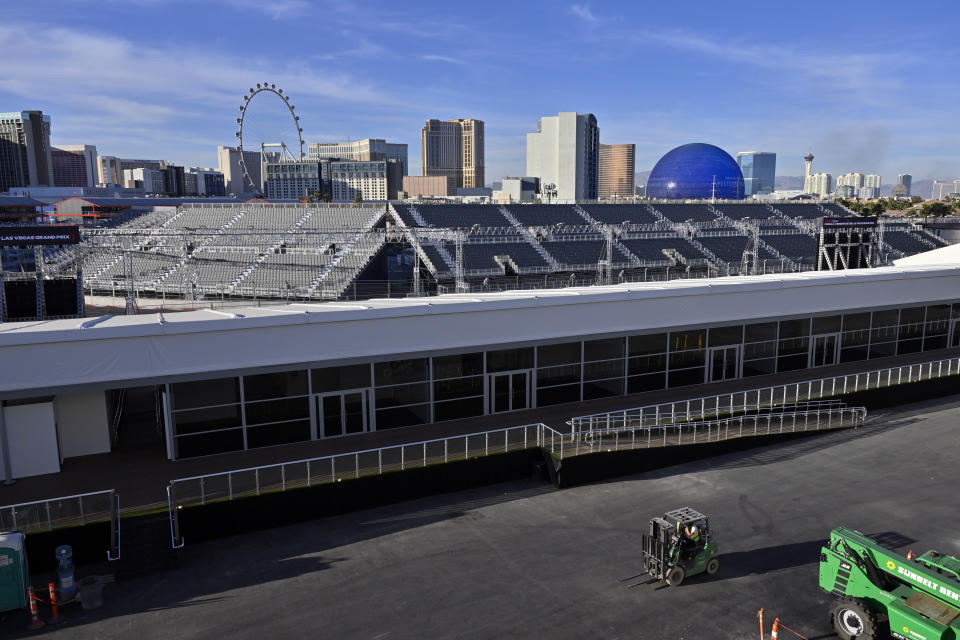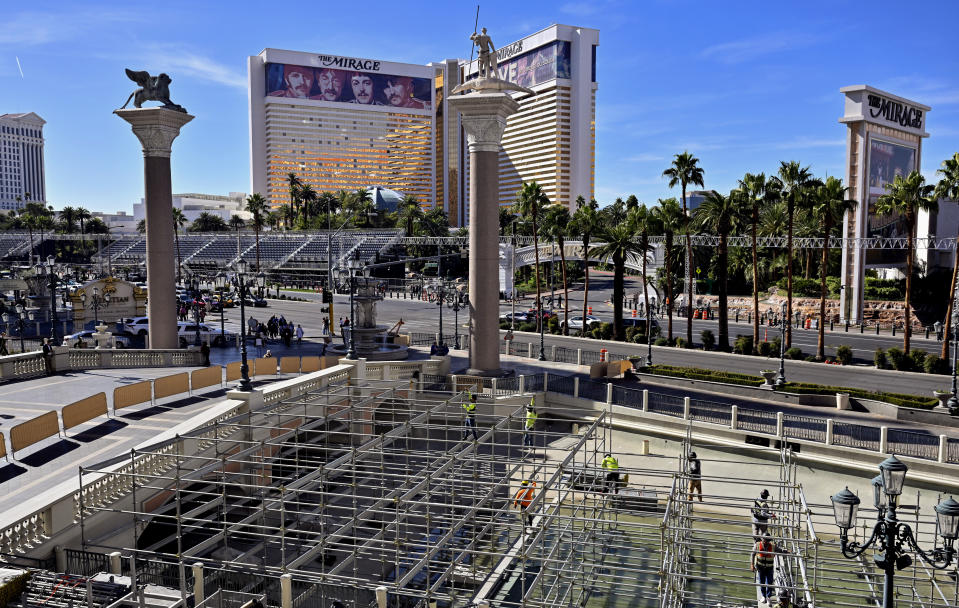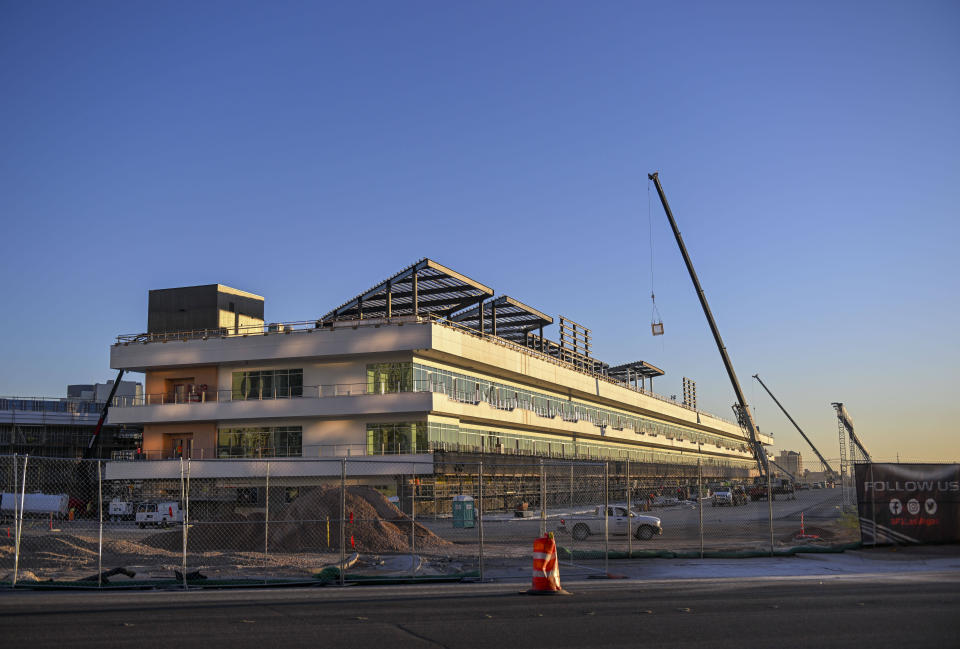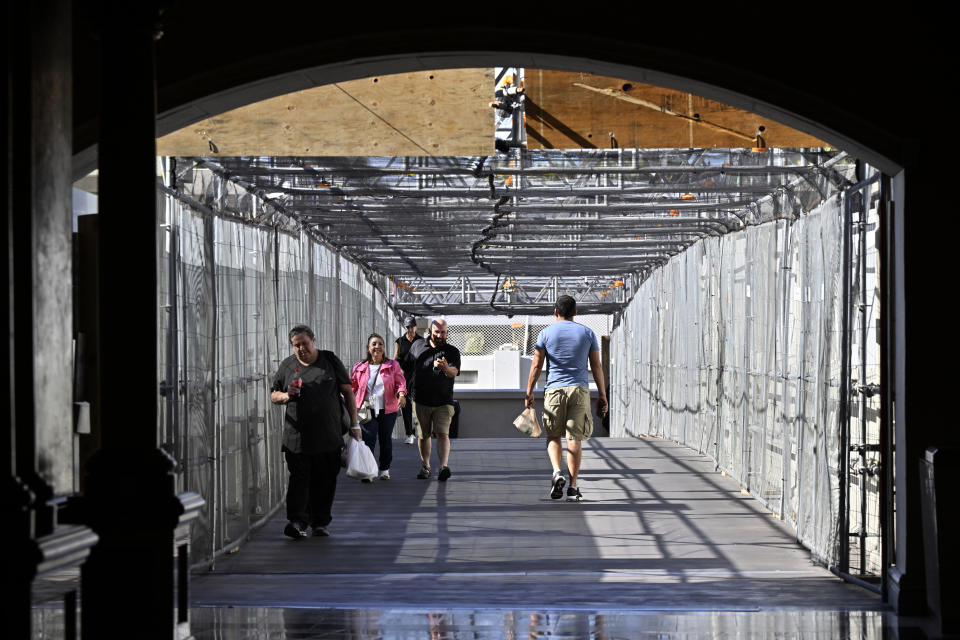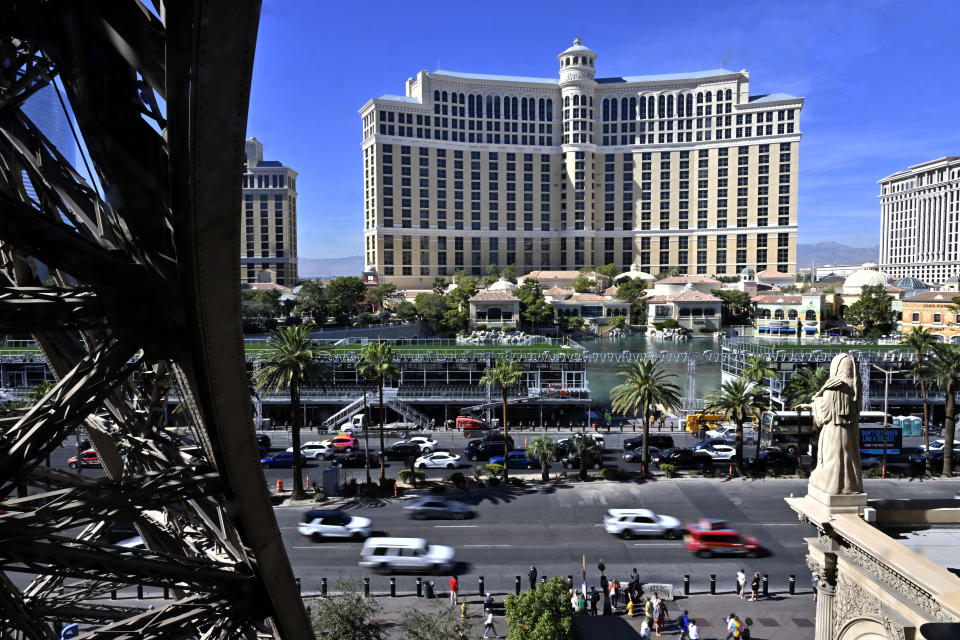How Las Vegas transformed into an F1 racetrack
LAS VEGAS - The inaugural Formula One Las Vegas Grand Prix is days away, but the F1 brand already has left its mark on the city. From the air, the corridor near Harry Reid International Airport is punctuated by a massive F1 logo, a 28,000-square-foot video screen half the size of a football field and bright enough to be seen even on the sunniest desert days.
After months of preparation, the race will take over the city this weekend, kicking off with practice runs Thursday and the main event Saturday at 10 p.m. local time (1 a.m. EST). The challenges of turning one of the busiest tourism areas in the world into a track have been unique: The new 3.8-mile track is the only F1 circuit in North America built on city streets.
The permanent F1 pit building, a 300,000-square-foot, four-story low-rise adjacent to the Strip, stands as a testament to the scale of the transformation Las Vegas has undergone and F1's commitment to the city. The paddock will serve as a central hub for competitors - with team garages (there are 10 teams and 20 drivers) providing direct access to the pit lane - and high-dollar fans with luxury suites, banquet halls and balconies overlooking Las Vegas landmarks.
From transforming infrastructure to navigating local politics, the arrival of F1 in Las Vegas has been no small feat. In the end, it's expected to fuel $1.3 billion in economic activity, Las Vegas tourism and F1 officials estimate - more than twice the projected total for the 2024 Super Bowl. F1 Las Vegas Grand Prix CEO Renee Wilm said 140,000 visitors are anticipated at the event.
---
A city transformed
It was 26 months ago when engineers from Tilke, a German firm responsible for designing 11 current F1 tracks, gave the green light that they could transform the busy streets of Las Vegas, including a stretch of the Strip, into a track. The streets would have to be suitable for high-performance vehicles traveling up to 212 mph, the estimated top speed this weekend.
Preparing the roads for F1 racers meant removing five to 10 inches of asphalt and replacing it with 60,000 tons of base-layer pavement and an additional 43,000 tons of intermediate pavement and race-layer surface.
The race will feature 20 cars blurring past casinos at night - what better way to capture the spectacle of Las Vegas? - requiring 1,750 light units to illuminate the track. Other temporary additions to the city include 18 grandstands, 10 hospitality club structures, 7.6 miles of track barriers, four extra vehicular bridges and three pedestrian ones.
Giant palm trees along the Bellagio fountains were uprooted to make space for temporary race structures. Gondola rides outside the Venetian were shut down to make room for viewing areas.
Tickets for these grandstand seats range from a couple hundred bucks for prerace activities to thousands for the two hours it will take the cars to complete 50 laps.
Las Vegas is different because new F1 tracks in Miami and Austin opened as part of the sport's U.S. expansion, but those circuits are located on the outskirts of town, with streets specifically built for F1 racing. Some races occur on city streets worldwide - in Monaco, Singapore and Saudi Arabia - but in those locations the government is part of an ownership group, making it easier to close down streets and businesses in preparation for race day.
The Las Vegas Grand Prix also is the only Formula One race owned by the company that owns F1. Liberty Media, based in the Denver area, bought F1 for $4.6 billion in 2017. And in 2019 the group began eyeing Nevada for its next new circuit.
Then, of course, the pandemic hit, delaying any ideations about the race until September 2021, when the engineers declared the concept feasible. From there, it would take several months to get state and local governments on board, but by May 2022, when F1 announced a third U.S. race, it was full speed ahead.
The deal between Liberty F1, the Las Vegas Convention and Visitors Authority and casino partners, including MGM, Caesars and Wynn, is for three years, but the intent is to stay here for much longer. In February 2023, Clark County, which has jurisdiction over the Strip, passed a resolution supporting closing of the roads to make the race possible for at least 10 years.
The concept of a permanent race has been a challenge for locals and tourists who have had their plans disrupted by F1 for nearly a year. Not only did resurfacing the Strip lead to lane closures and other traffic frustrations, but the construction also extended to the side streets and back roads that locals have long used to avoid the congestion of Las Vegas Boulevard. This left typical 20-minute commutes home taking up to an hour.
Jacob Orth, a social media influencer, has been part of a cadre of Las Vegas personalities chronicling the F1-fueled discontent.
"This is an unfamiliar sport to most Americans from an unfamiliar organization. F1 didn't set themselves up for a warm welcome," Orth told The Washington Post. "The race in its first year in Las Vegas has been so visible and had an impact on so many people."
A main complaint: F1 organizers are forcing locals to deal with their event they didn't ask for and that they won't be able to enjoy.
"Because F1 will draw such a high-end clientele, a lot of locals are feeling priced out," Orth said. Ticket prices and passes have ranged from hundreds to about $20,000 for three-day passes.
Hotel room rates along the Strip began to drop as the event approached, but hospitality experts have said that doesn't necessarily mean a decrease in demand.
Race organizers also faced criticism for their initial plan to charge clubs and restaurants with a view of the Strip $1,500 per person, based on max occupancy according to fire codes, to host an event around the race. This would have cost several businesses millions. After a wave of complaints, the Las Vegas Grand Prix eventually relented and instead charged a $50,000 flat fee to hold an F1-branded event.
A few weeks before race day, organizers put a film on the glass barriers over pedestrian bridges. They said it was for safety but seemed as if they were simply preventing anyone who didn't pay for a ticket from enjoying the race.
That led to people removing the tape and proudly sharing their pedestrian disobedience on social media. The next day, however, the film was replaced, and there were metal cages encasing the passageway.
---
Start your engines
In previous years, this week in mid-November generally is one of the slowest weekends of the year (behind the weekend surrounding Christmas), according to the LVCVA.
"Now it's going to be the best weekend we've ever had," LVCVA chief executive Steve Hill said. "That change is hugely impactful. We just need to make it so it's not so inconvenient for the folks who live and work here."
Hill pointed out that the circuit pavement is designed to last six to 10 years, so even when it begins to need maintenance, that won't need to happen all at once and require significant road closures.
Even Orth is holding out hope: "The pressure is on F1 to deliver big this weekend, to see if it turns out to be big enough and beneficial for enough people to justify the months of inconvenience."
Hill is confident it will. "Formula One will be part of our community here in Las Vegas," he said. "This is just the beginning of that relationship."
---
F1 Las Vegas Grand Prix, by the numbers
---
Circuit length: 3.8 miles
Number of laps: 50
Expected top speed: 212 mph
Forecasted lap time: 1 minute 33 seconds
Estimated average speed: 147 mph
Grandstands: 18
Light units: 1,750
Temporary bridges: 7
Related Content
The final hours of Rosalynn Carter's life, in the town where it began
Each generation is defined by its movies. Here are 57 that shaped me.
Why is Buc-ee's so loved? We went Beaver Nugget shopping to find out.
